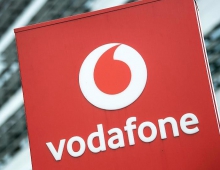
Vodafone and Nokia to Create 4G network on the Moon
The Moon will get 4G coverage next year, 50 years after the first NASA astronauts walked on its surface. Vodafone plans to create the first 4G network on the Moon to support a mission by PTScientists in 2019 and has appointed Nokia as its technology partner.
Berlin-based company, PTScientists is working with Vodafone Germany and Audi to achieve the first privately-funded Moon landing. Mission to the Moon is due to launch in 2019 from Cape Canaveral on a SpaceX Falcon 9 rocket.
Vodafone will set up the Moon's first 4G network, connecting two Audi lunar quattro rovers to a base station in the Autonomous Landing and Navigation Module (ALINA). Nokia, through Nokia Bell Labs, will create a space-grade Ultra Compact Network that will be the lightest ever developed - weighing less than one kilo, the same as a bag of sugar.
The 4G network will enable the Audi lunar quattro rovers to communicate and transfer scientific data and HD video while they approach and study NASA's Apollo 17 lunar roving vehicle that was used by the last astronauts to walk on the Moon (Commander Eugene Cernan and Harrison Schmitt) to explore the Taurus-Littrow valley in December 1972.
Vodafone testing indicates that the base station should be able to broadcast 4G using the 1800 MHz frequency band and send back the first ever live HD video feed of the Moon's surface, which will be broadcast to a global audience via a deep space link that interconnects with the PTScientists server in the Mission Control Centre in Berlin.
A 4G network is highly energy efficient compared to analogue radio and that will be crucial to Mission to the Moon and is the first step to building communications infrastructure for future missions.
"This project involves a radically innovative approach to the development of mobile network infrastructure," Vodafone Germany Chief Executive Hannes Ametsreiter said.
The decision to build a 4G network rather a state-of-the-art 5G network was taken because the next generation networks remain in the testing and trial stage and are not stable enough to ensure they would work from the lunar surface.




















